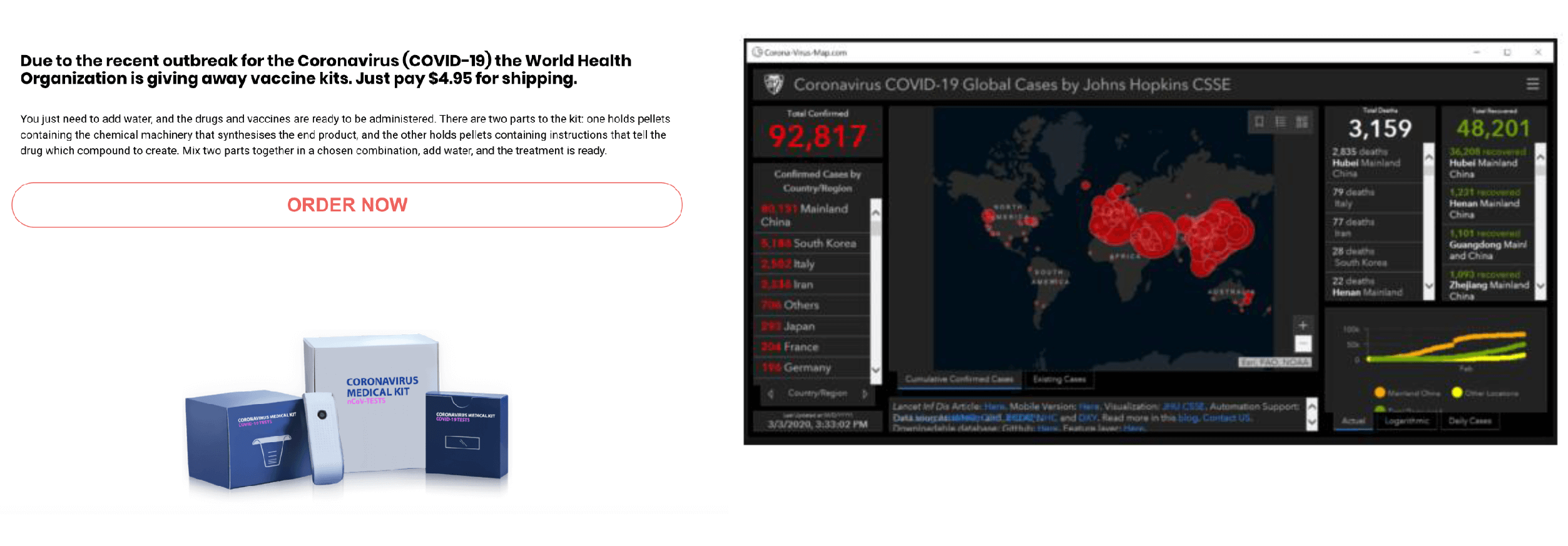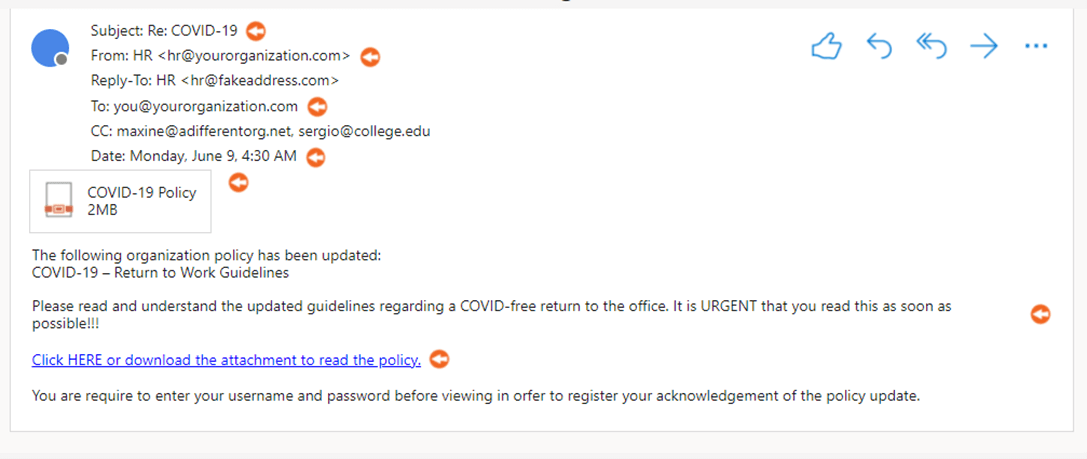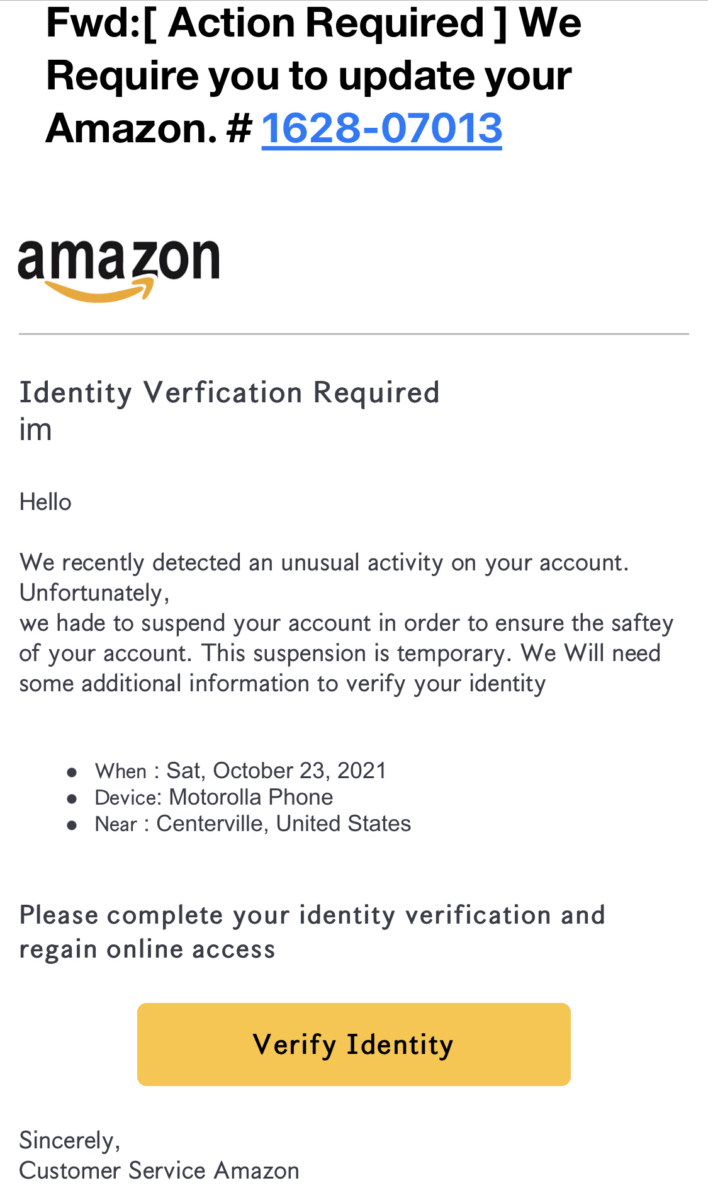Examples of Cyberfraud Attacks
PHISHING
Scammers use email or text messages to trick you into giving them your personal information. Phishing emails and text messages may look like they’re from a company you know or trust. They may look like they’re from a bank, a credit card company, a social networking site, an online payment website or app, or an online store.
It’s important to check little details like the sender’s URL, an email attachment, link, and more.
Below is an example of an email phishing attempt. Red flags in this email include:
- A sense of urgency
- Request for identity verification
- Improper spelling and grammar
PHARMING
A link provides a route to a fraudulent webpage that collects information for the attacker. Often, the page is designed to look like the real version of what it is supposed to be – with some minor inconsistencies that include:
- URL inconsistencies / spelling changes i.e. Microsoft.com = Mlcrosoft.com (with a lowercase L instead of an i)
- HTTP instead of HTTPS – HTTP is no longer a secure protocol

Source: Drawbridge Partners, COVID-19 Cybersecurity Training


